In Nepali Chapter 6, Stephen Hawking never ceased his exploration of physics despite facing the challenges of Amyotrophic Lateral Sclerosis (ALS). Born on January 8, 1942, he persisted in his quest for knowledge despite physical limitations. His journey, chronicled in Nepali Chapter 6, showcases his unwavering dedication to unravelling the mysteries of the universe despite his incapacitation.
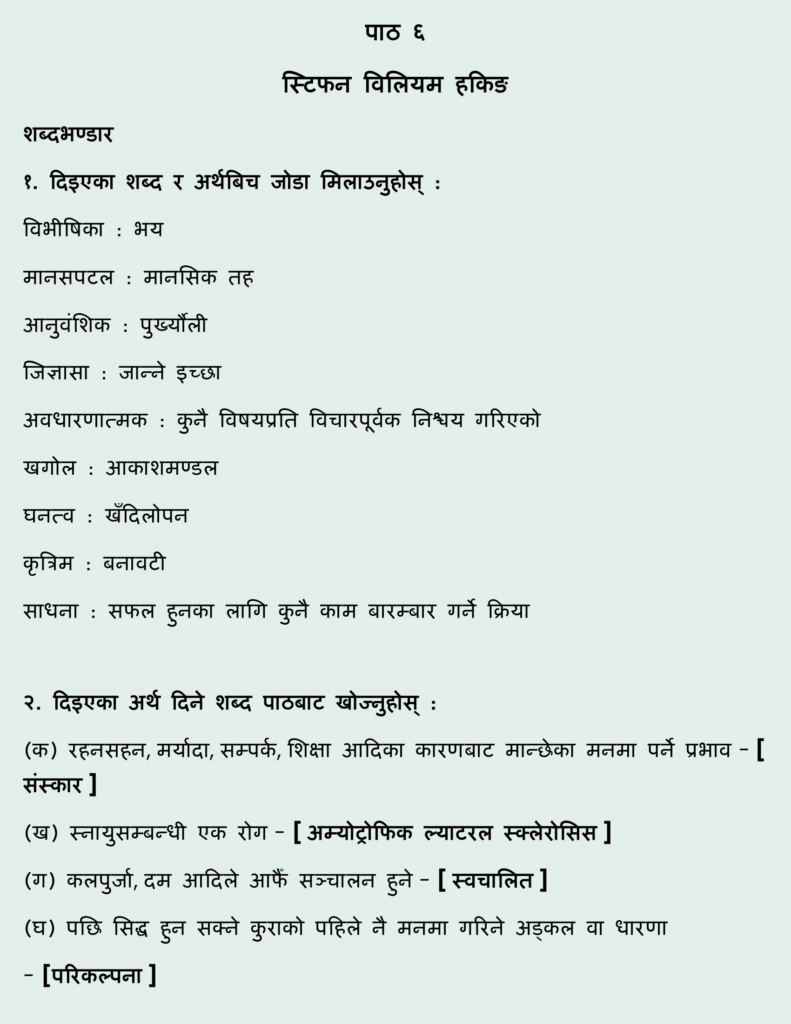
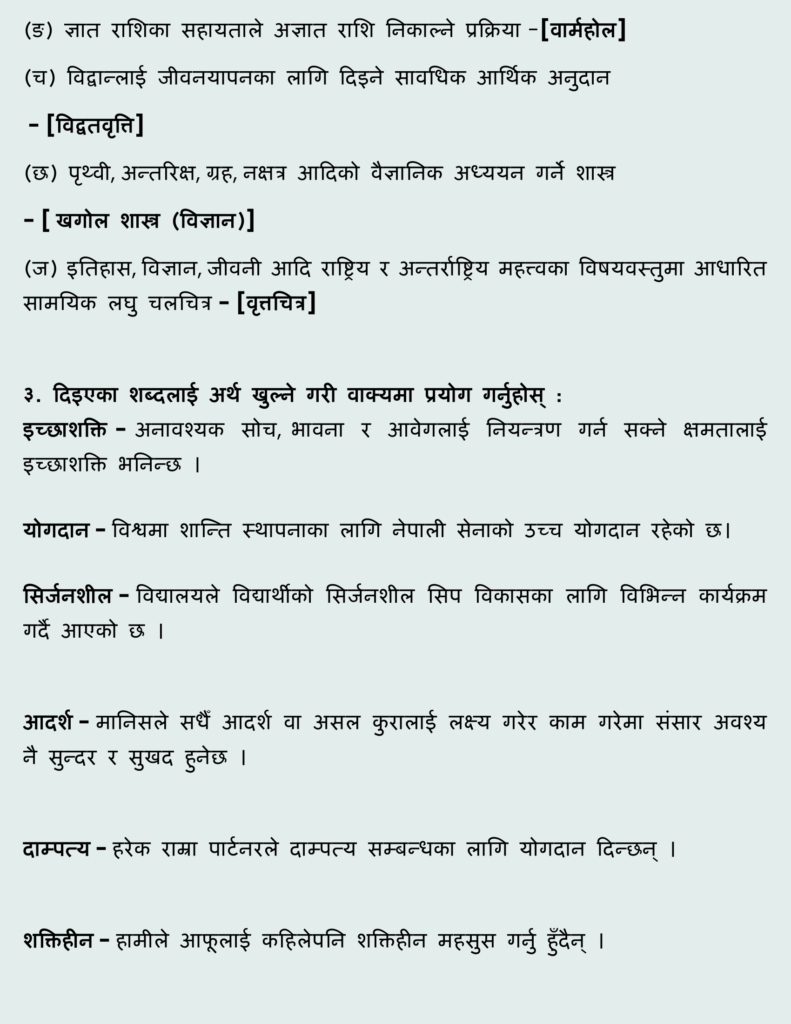
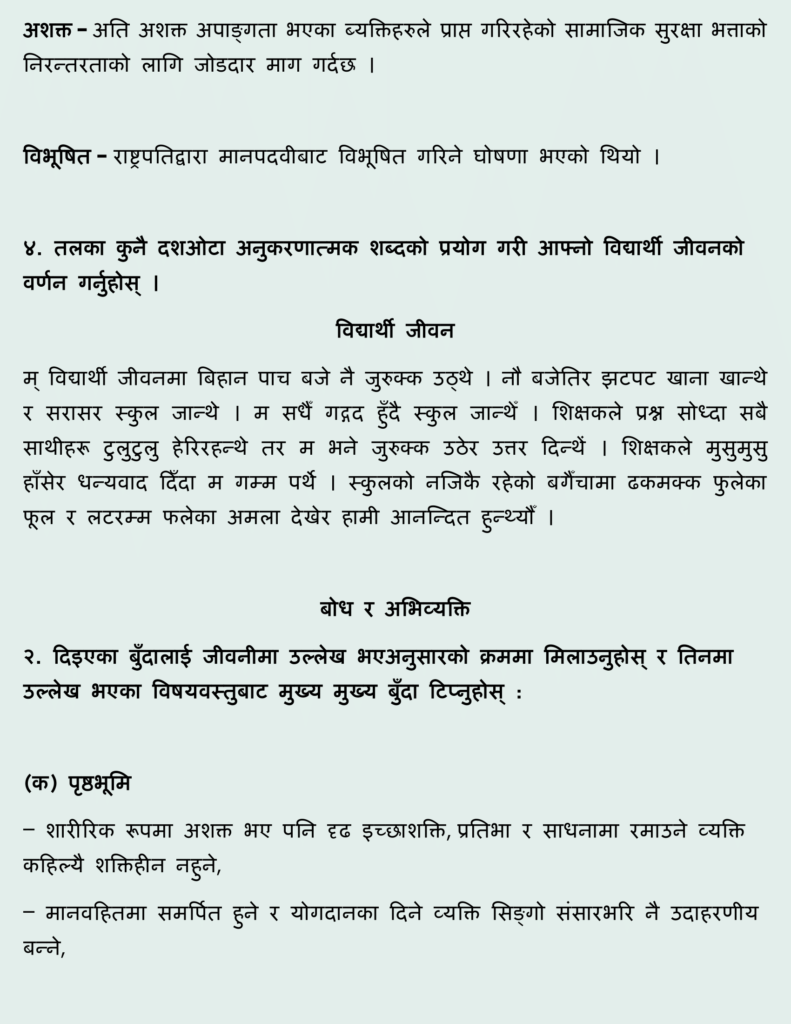
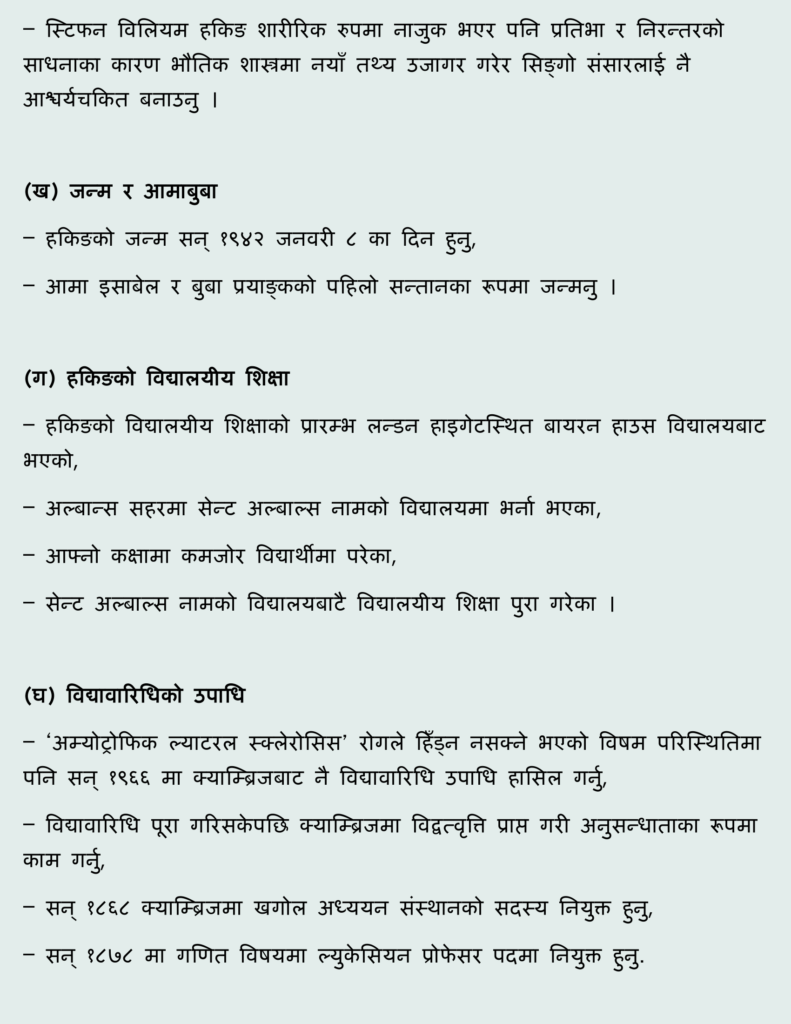
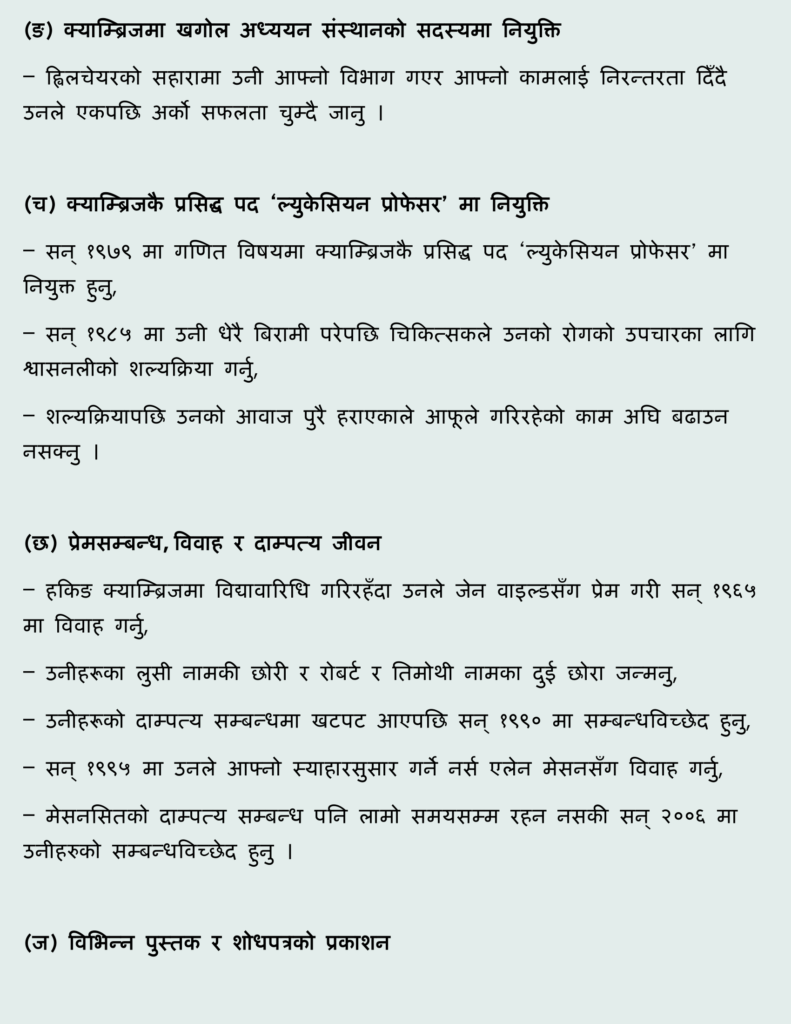
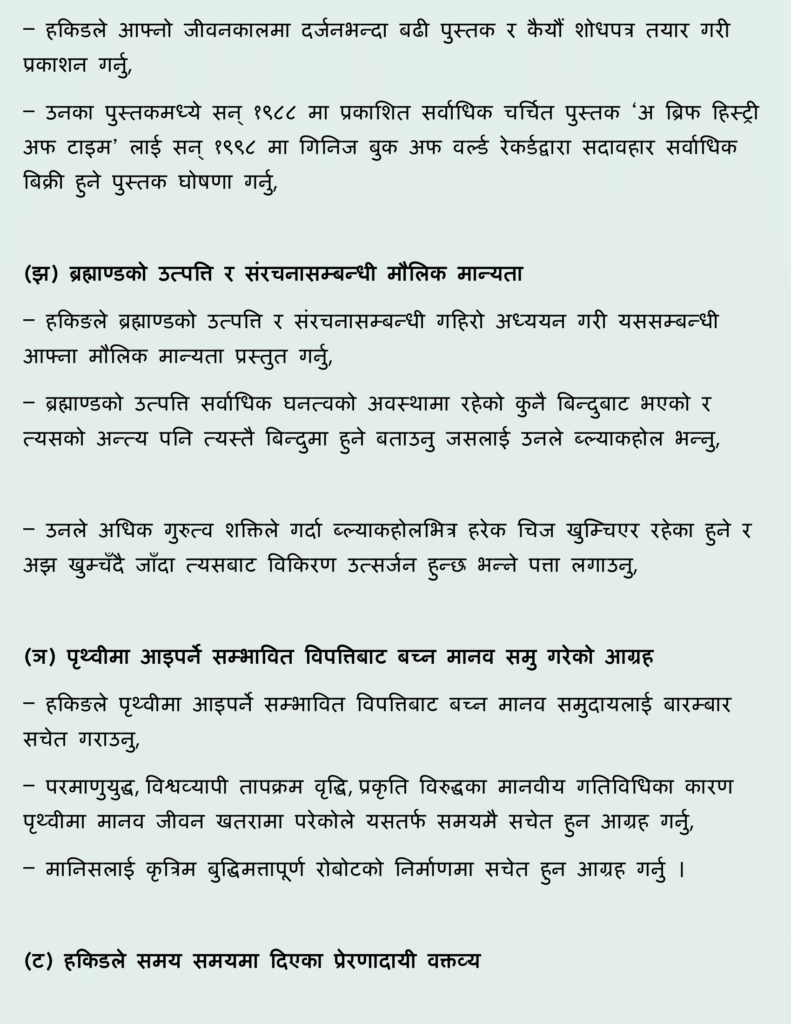
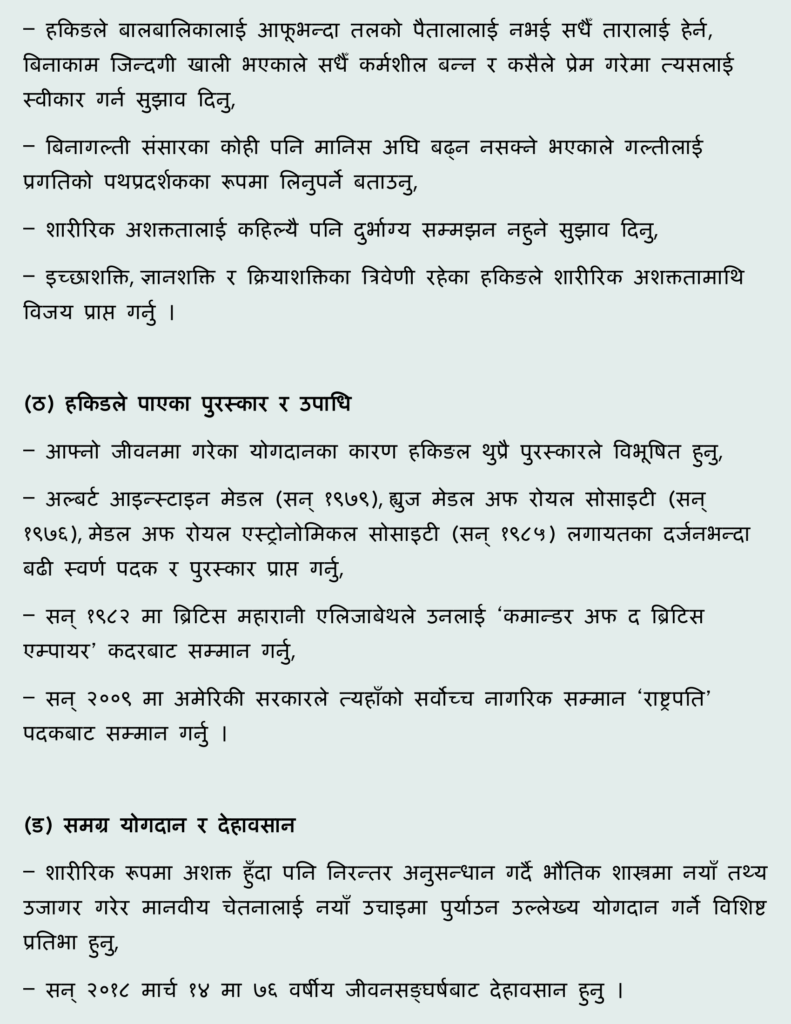
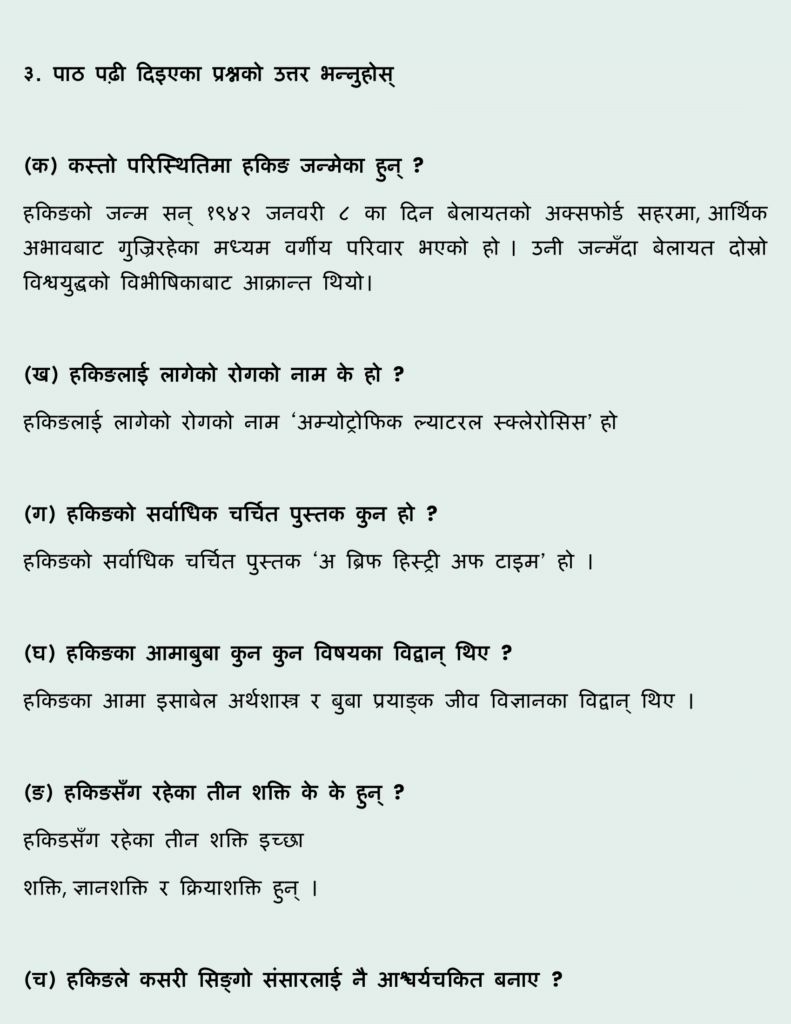
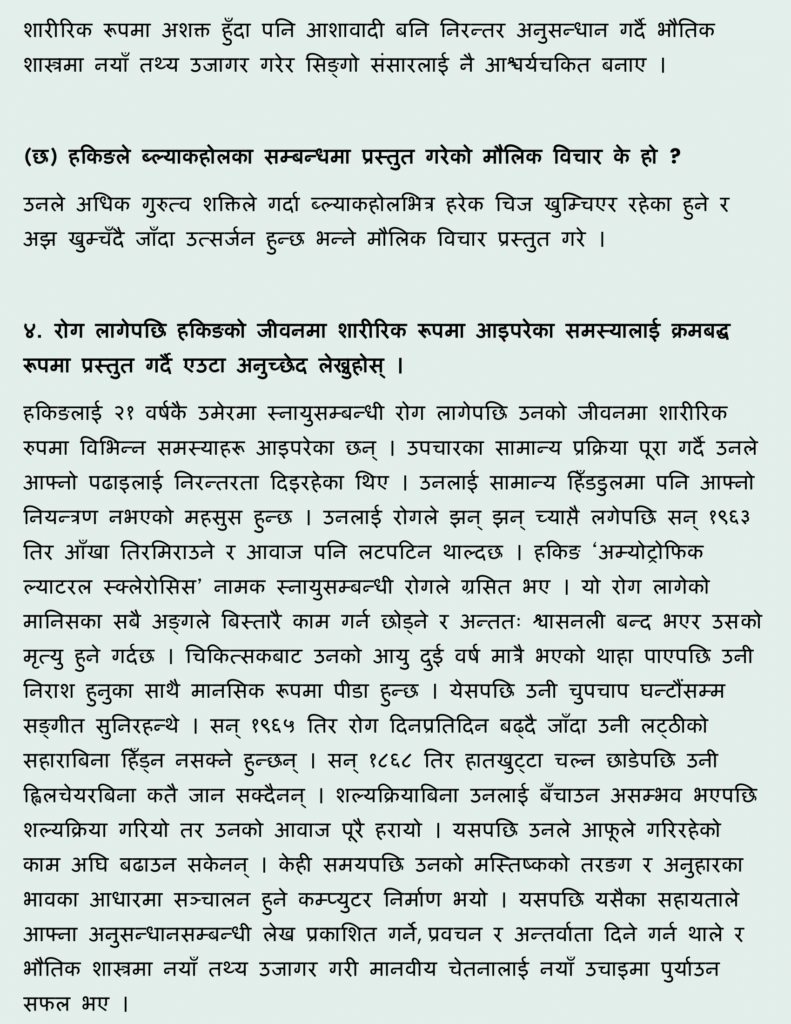
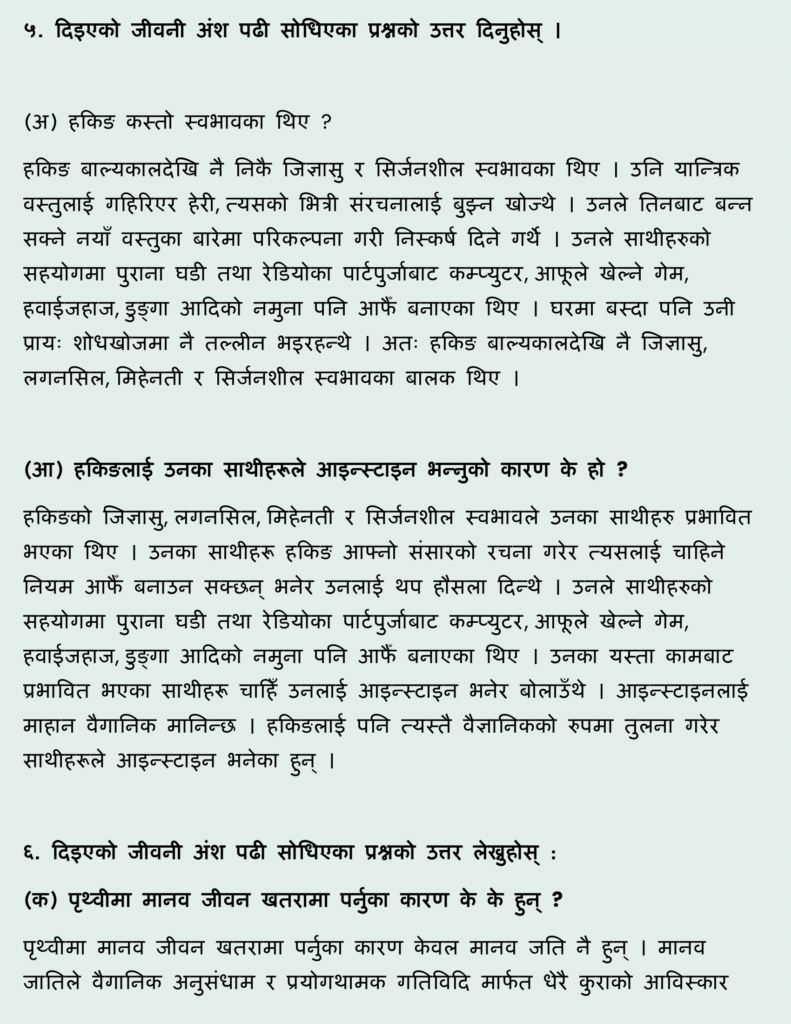
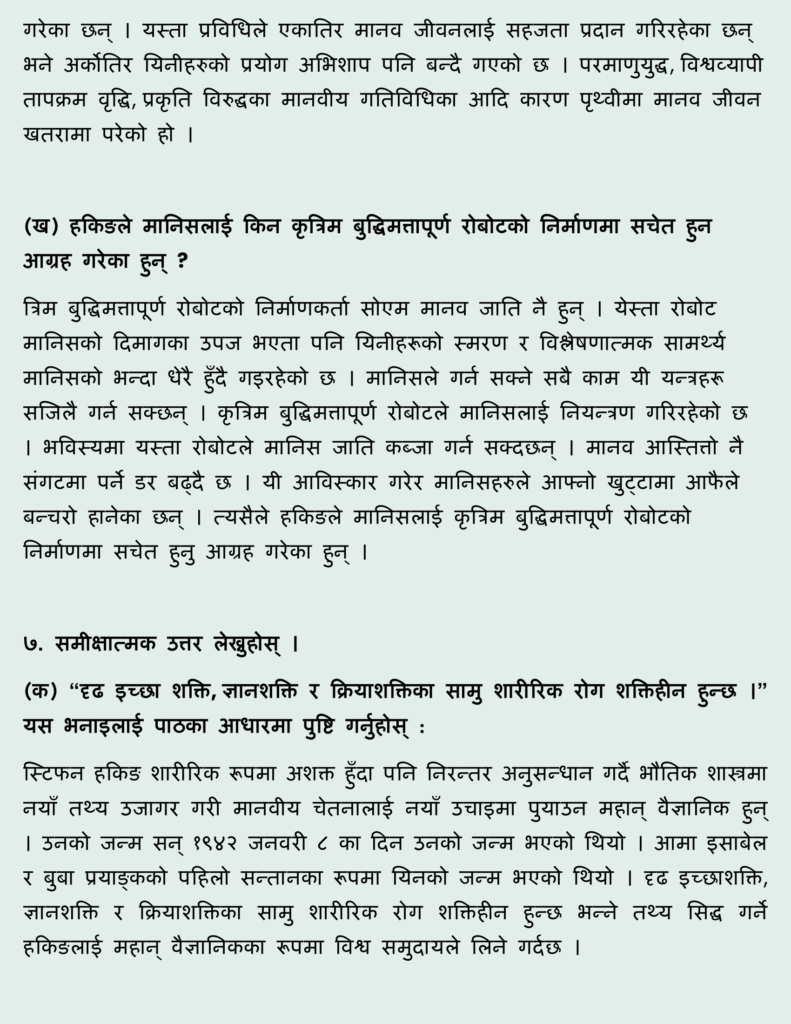
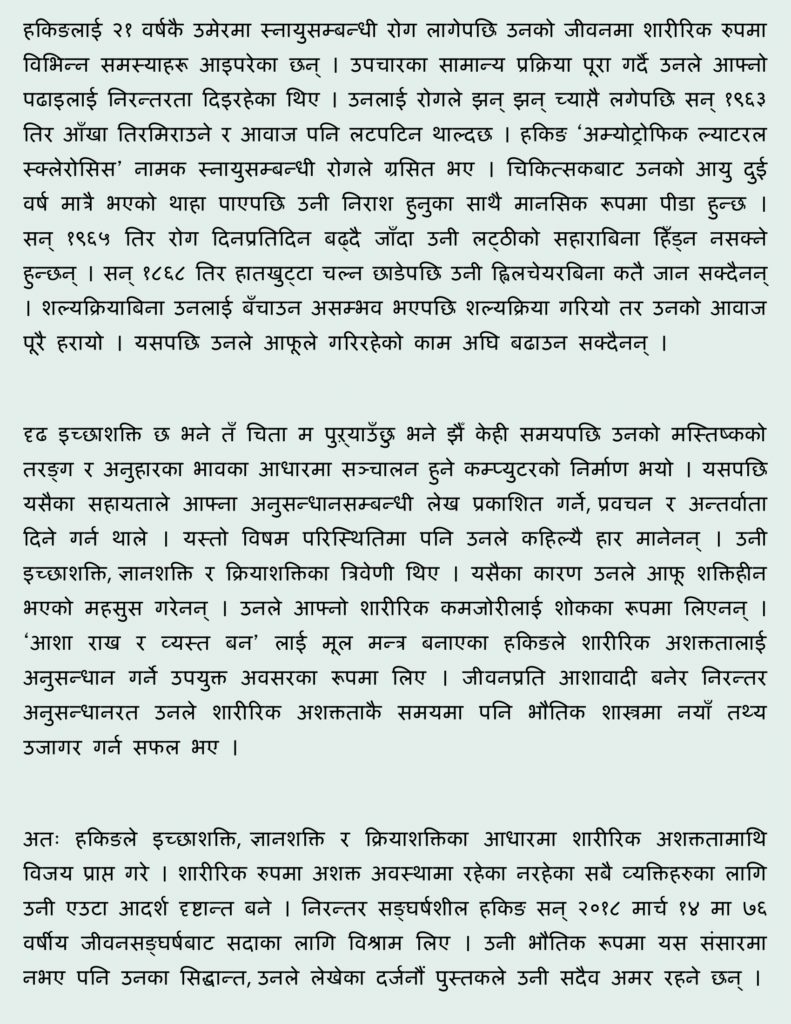
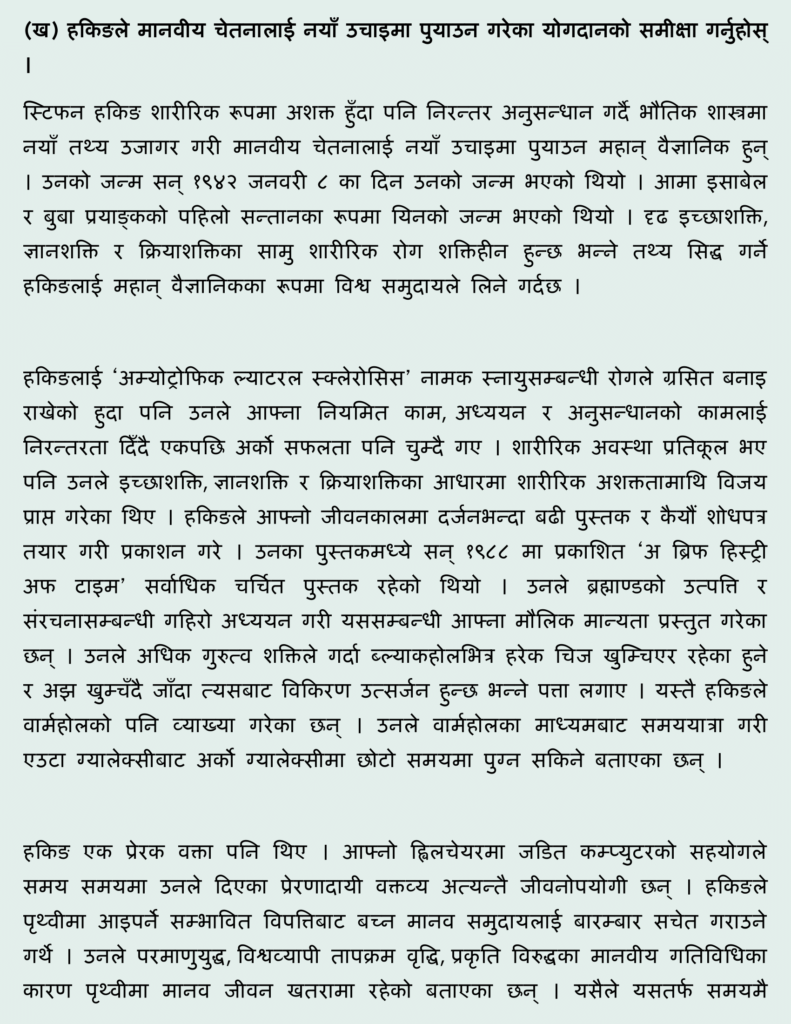
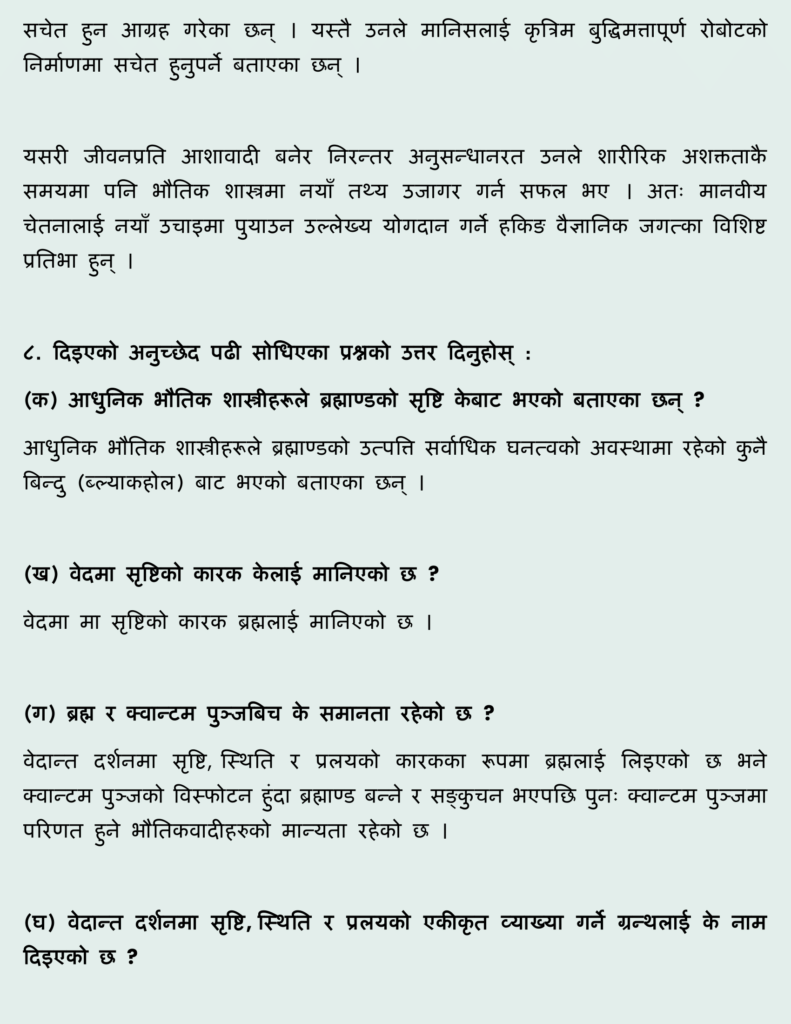
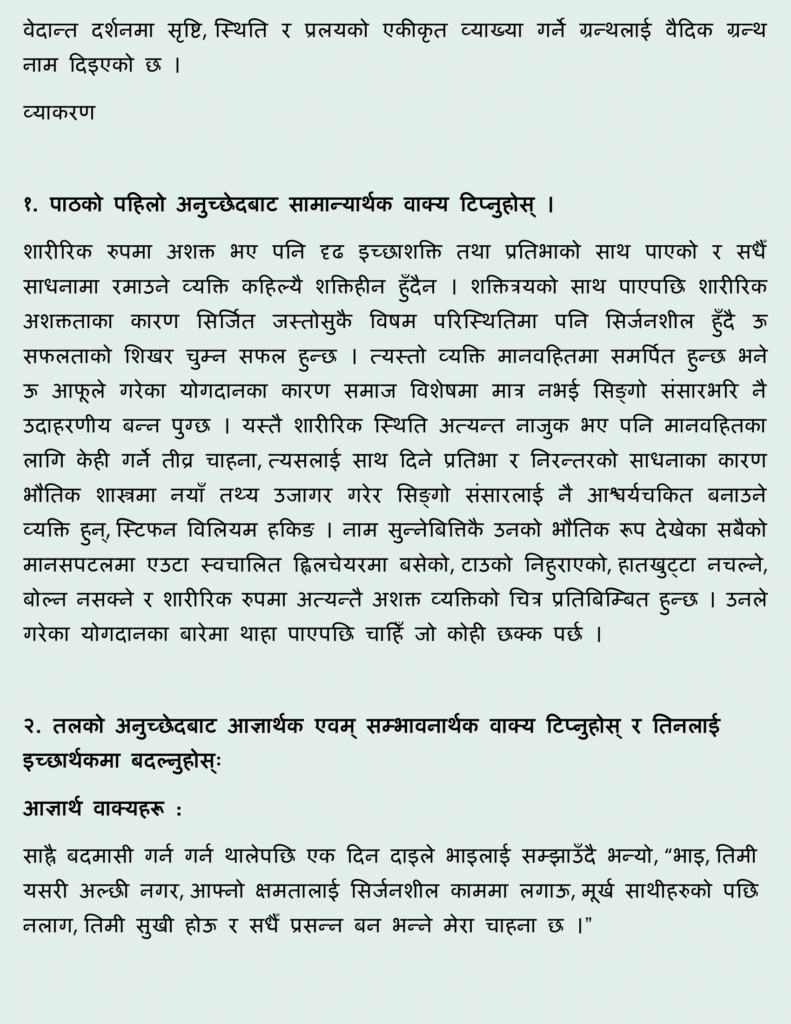
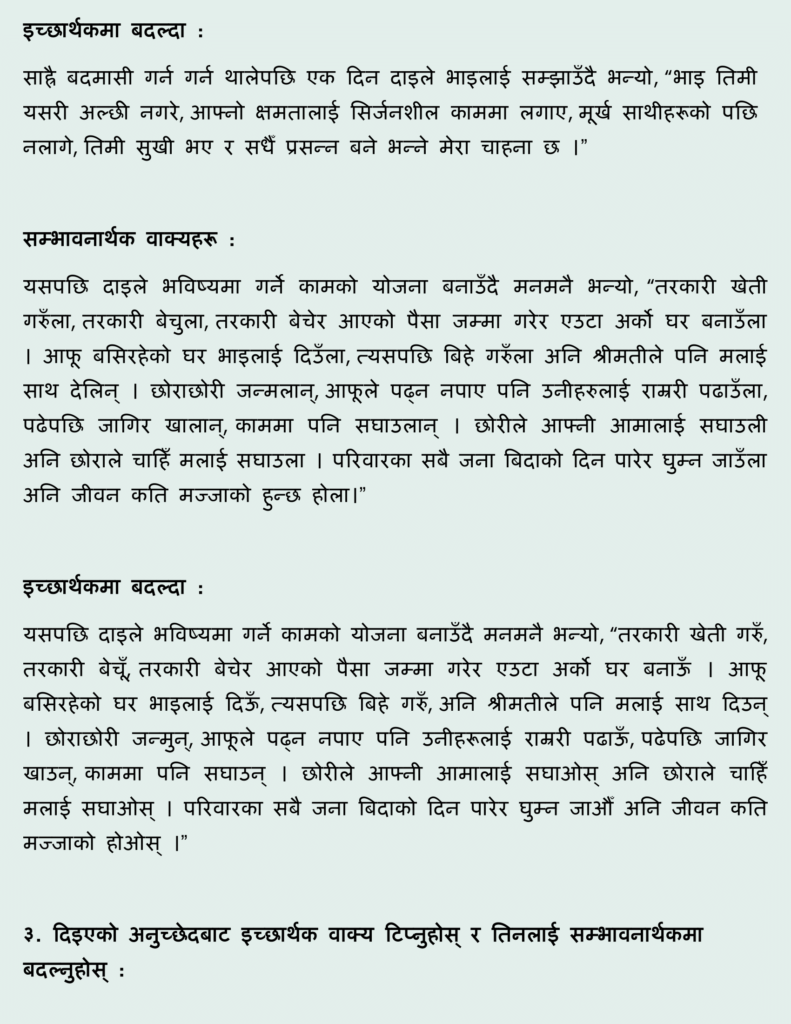
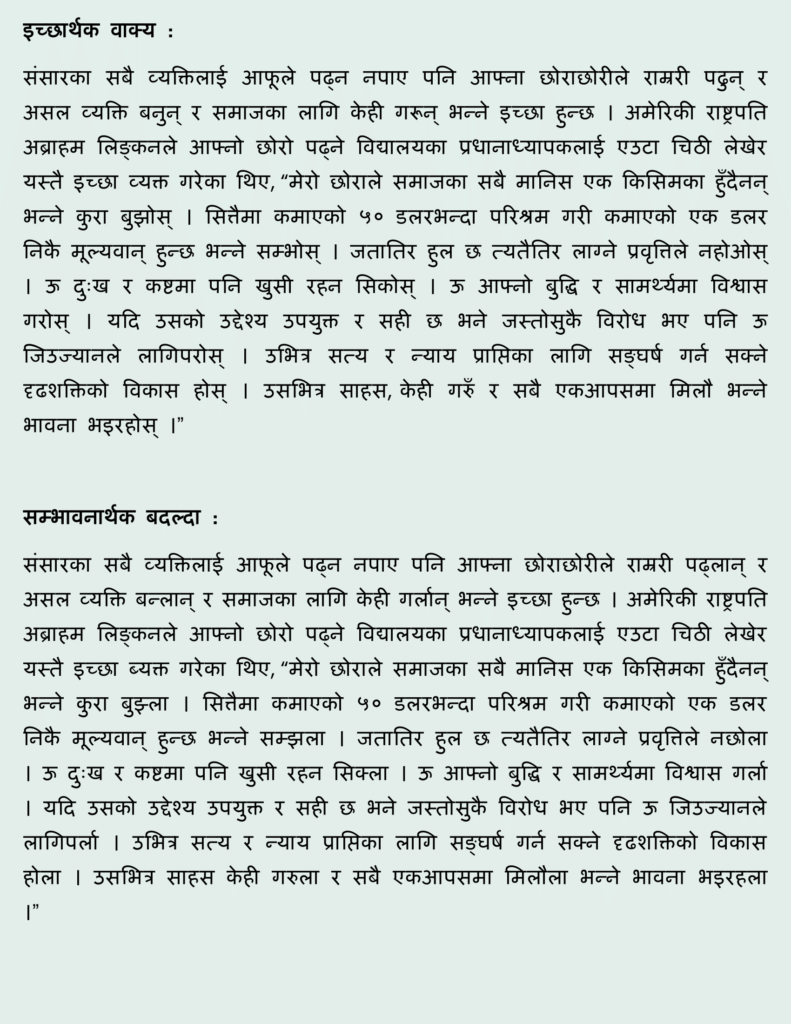
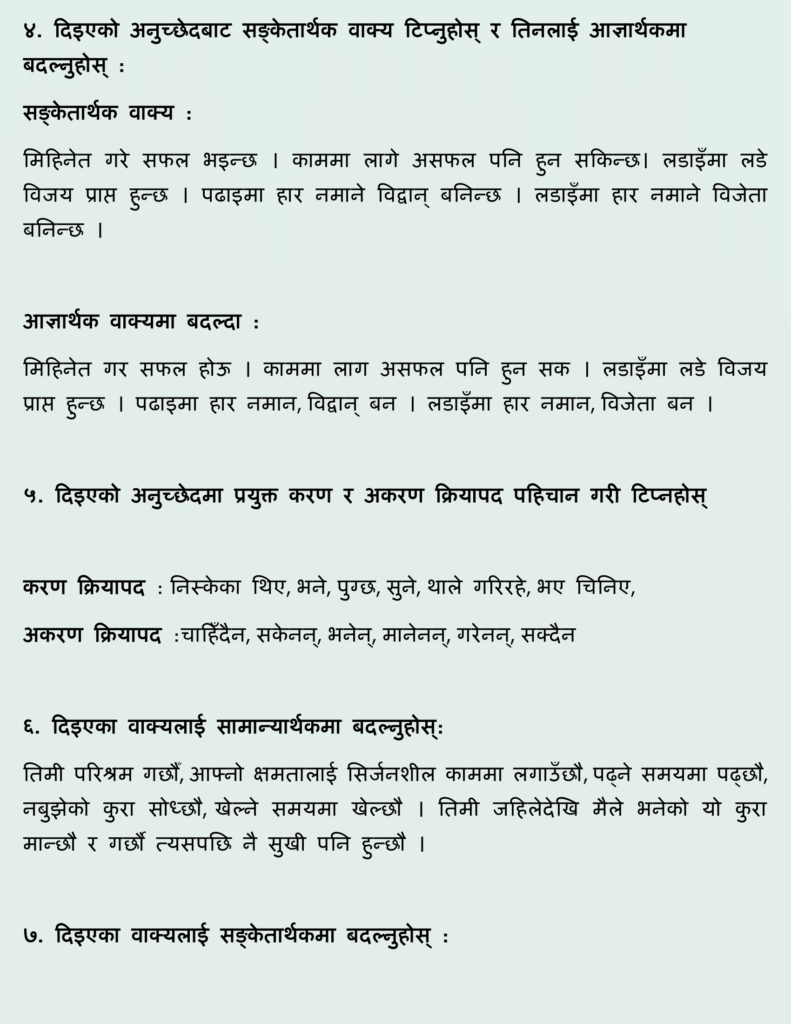
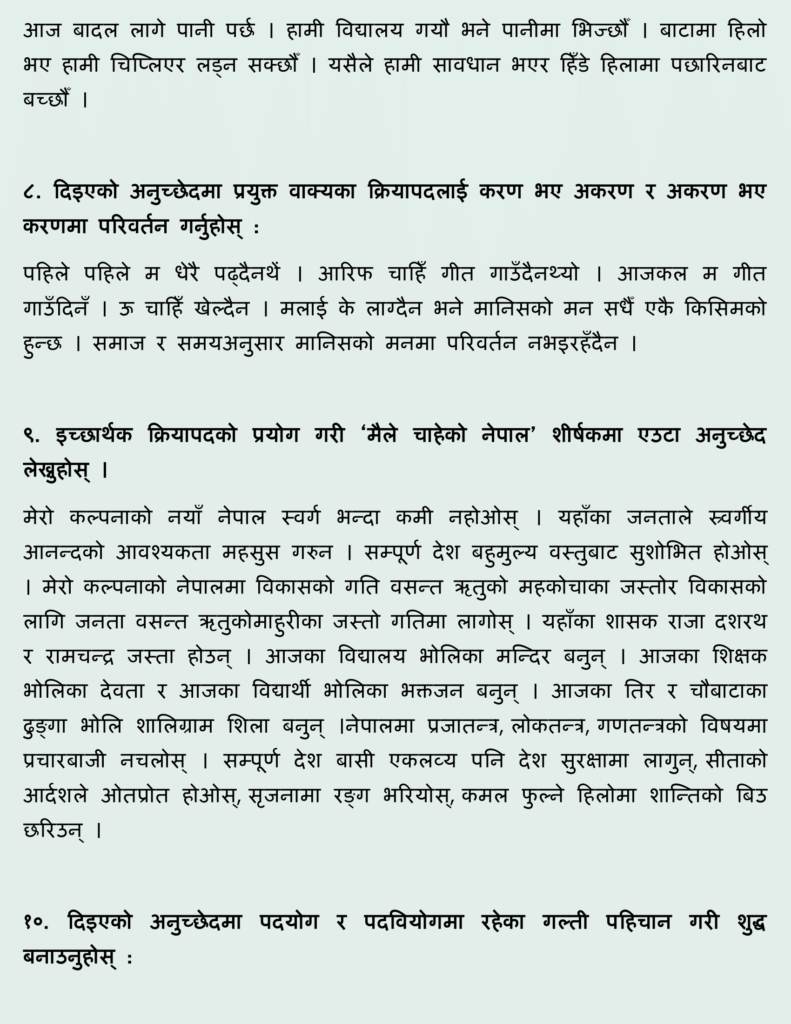
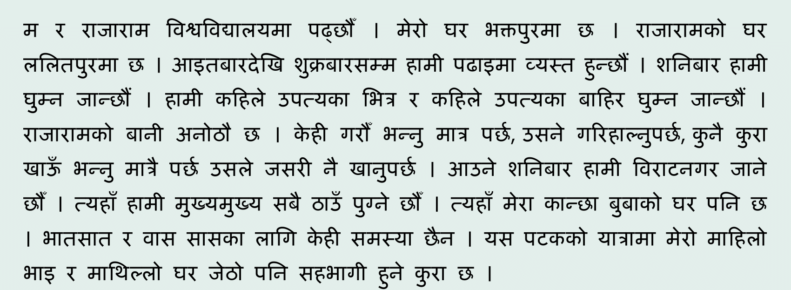
Summary of Nepali Chapter 6: Stephen Hawking
Nepali chapter 6 is a biography of one of the greatest modern-day scientists, Stephen Hawking. At the age of 21, Stephen Hawking was diagnosed with ALS, a neurological disease that gradually weakened his body. Despite completing the standard treatment process, he continued his studies with unwavering dedication. As his condition worsened, his ability to move and speak declined. By 1963, he struggled to control his eye movements and his voice became increasingly slurred.
By 1968, he could no longer walk without assistance and eventually became confined to a wheelchair. Surgery became impossible, and when surgery was performed, his voice was completely lost. Despite this, he pushed forward, determined to advance his work.
With his strong willpower, he refused to surrender to despair. Utilizing his intellect and the basis of his emotional strength, he ventured into computer development based on brainwave and muscle movement patterns. With the help of this technology, he continued to publish research papers, deliver lectures, and conduct interviews. Even in such adverse circumstances, he never admitted defeat.
His triumvirate of willpower, intellect, and physical prowess enabled him to overcome his physical limitations. Despite being physically incapacitated, he became a role model for all individuals, whether disabled or not. His motto “Keep hope alive and stay busy” exemplified his aptitude for research in the face of physical weakness. Throughout his life, he remained optimistic and continued his research relentlessly, even amidst physical incapacitation, successfully uncovering new facts in the field of physics.
Therefore, Hawking’s victory over physical incapacitation based on willpower, intellect, and physical prowess is evident. For all individuals, whether physically incapacitated or not, he became an exemplary figure. Hawking, a tireless struggler, finally took permanent rest from the struggles of life on March 14, 2018, at the age of 76. Although he may no longer be physically present in this world, his principles, documented in dozens of books he authored, ensure his eternal legacy.
Write a summary of the Nepali chapter 6: Stephen Hawking in short.
In Nepali Chapter 6, Stephen Hawking’s remarkable journey unfolds despite physical challenges. Born in 1942, he battled Amyotrophic Lateral Sclerosis (ALS) at 21, yet pursued knowledge relentlessly. Despite ALS progression hindering movement and speech, Hawking’s intellect remained sharp. By 1968, confined to a wheelchair and losing his voice, he delved into computer development, enabling continued research. His motto “Keep hope alive and stay busy” epitomized his resilience. Despite physical limitations, he pioneered physics, inspiring generations. Hawking’s triumph over adversity, chronicled in Nepali Chapter 6, showcases the indomitable spirit transcending physical constraints.
What illness did Stephen Hawking battle throughout his life?
Stephen Hawking battled Amyotrophic Lateral Sclerosis (ALS), as mentioned in Nepali Chapter 6.
When was Stephen Hawking born, and what significant event occurred in his life despite his illness?
Stephen Hawking was born on January 8, 1942. Despite his battle with ALS, chronicled in Nepali Chapter 6, he continuously pursued knowledge and contributed groundbreaking discoveries in physics.
Who were Stephen Hawking’s parents, and how did they influence his life?
Stephen Hawking’s parents were Isobel and Frank. They instilled in him a sense of determination and resilience, evident in his relentless pursuit of knowledge despite his physical challenges, highlighted in Nepali Chapter 6.
What term describes Stephen Hawking’s unwavering commitment to uncovering the mysteries of the universe?
Stephen Hawking’s unwavering commitment to unravelling the mysteries of the universe is showcased in Nepali Chapter 6, where he persistently delved into the realms of physics despite his physical incapacitation.
How did Stephen Hawking’s journey exemplify resilience and determination?
Stephen Hawking’s journey, detailed in Nepali Chapter 6, exemplifies resilience and determination as he continued his exploration of physics despite the progressive nature of his illness, Amyotrophic Lateral Sclerosis (ALS).
How many Chapters are there in the Class 12 Nepali book?
There are a total of 12 chapters in the class 12 Nepali book. You can find the exercise of each chapter on the elearningwithguru website.
Where can we find the PDF of the book of Class 12 Nepali?
You can download the class 12 Nepali guide from the Ministry of Education, Science and Technology website.

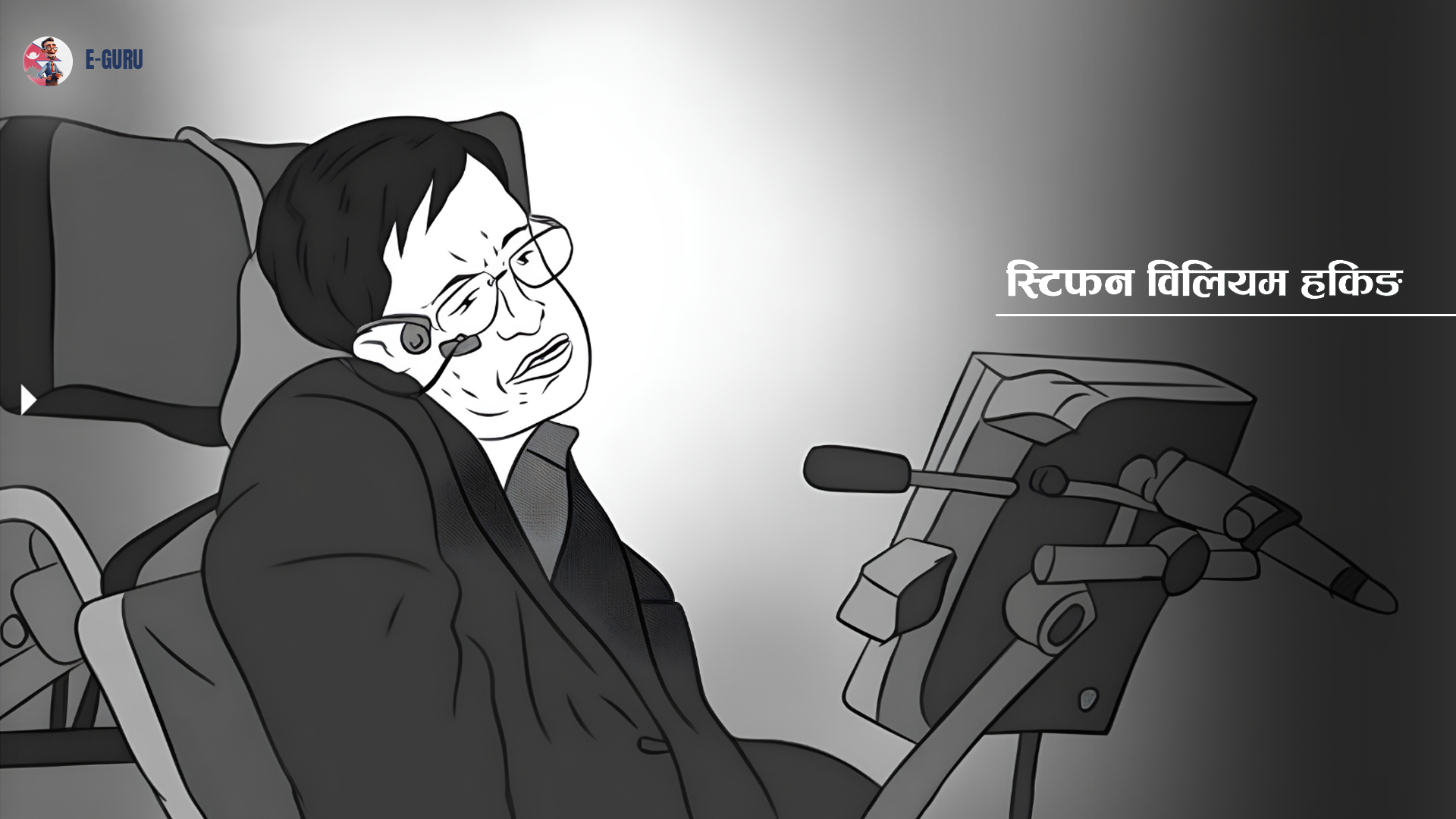
Leave a Reply